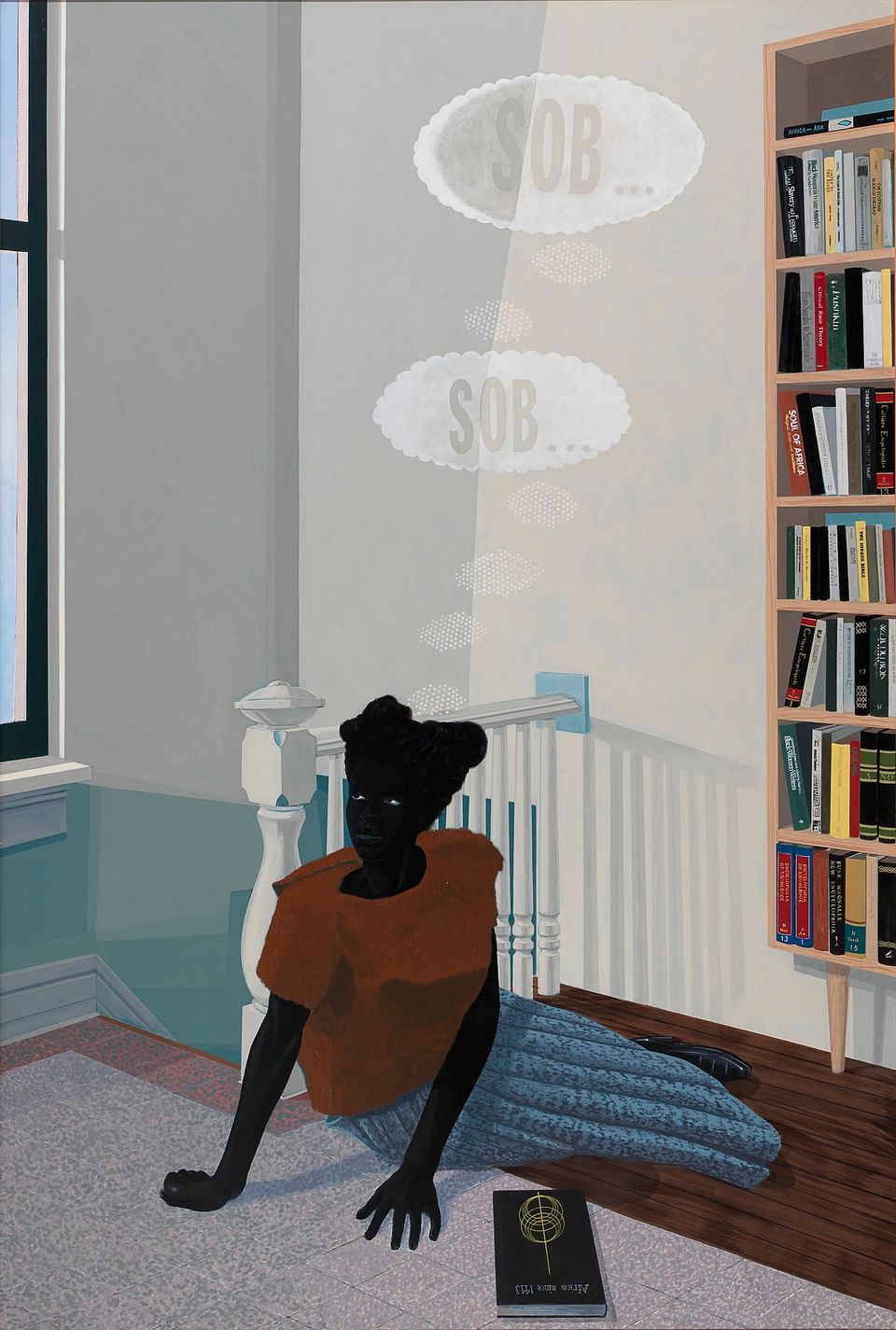

Kerry James Marshall, whose work Sob Sob is part of the Smithsonian American Art Museum’s collection, chronicles the African American experience in his paintings. These themes include issues of race, identity, and the portrayal of Black people in Western art. As the third and final presentation in the museum’s 2012 Clarice Smith Distinguished Lectures in American Art, Marshall began to talk about the curious role of the artist as lecturer (“What do audiences expect to hear from the artist, and do artists really have anything worthwhile to say?”). Then he showed us images of his work, referencing “the dreams and desires that have kept him going back to the studio every day for forty years now.”
When he was a child and looking at art in the Los Angeles County Museum of Art, he didn’t see any images of people who, in his words, “looked like me.” At that point, “the brilliance of those works began to dim for me a little,” he said. He set out to one day correct that, “to be a part of that story." In his talk, he chronicled his journey from abstraction to realism, and talked about the power of images, whether it’s a Black man in the White House, or figures of Black people in a work of art. Marshall’s work is often a response to the world around him: from the pin-up to the comic book hero, Marshall tries to recast these genres in terms of the African American experience while also changing the expectations for the viewer. His works, rich in color, meaning, and history, are part of major museum collections.
To see—and hear—Kerry James Marshall for yourself, view our webcast of his talk.
















